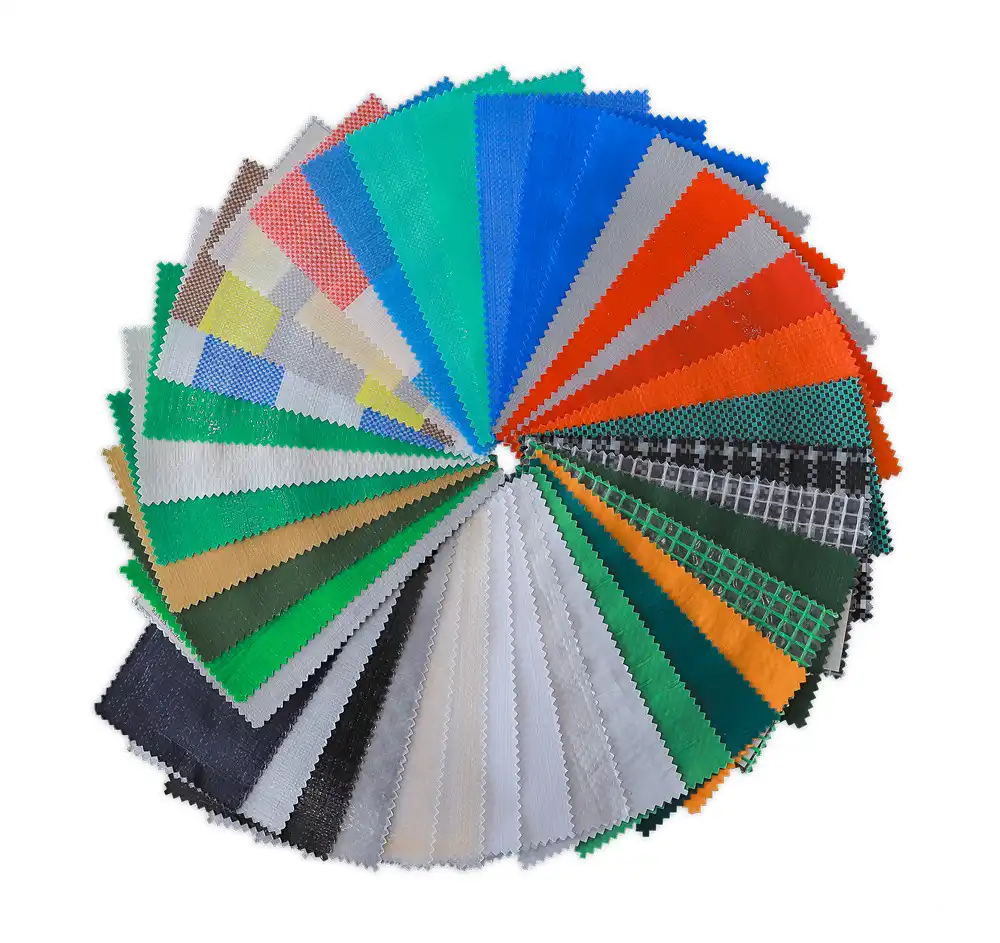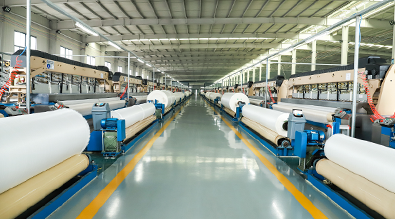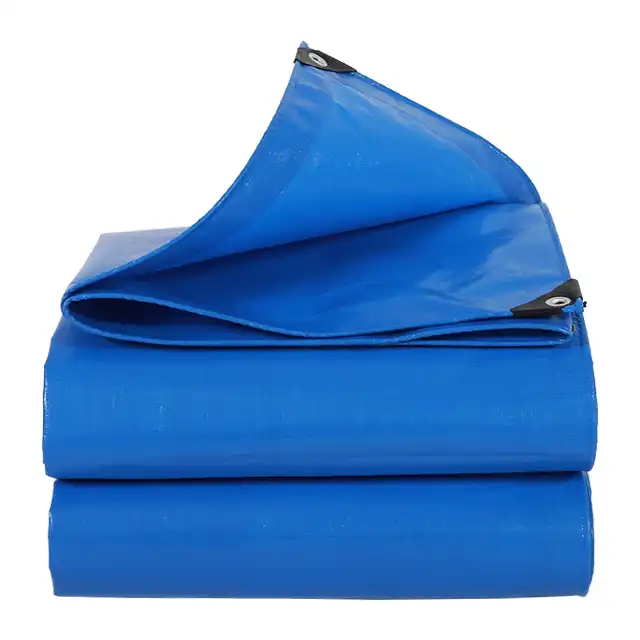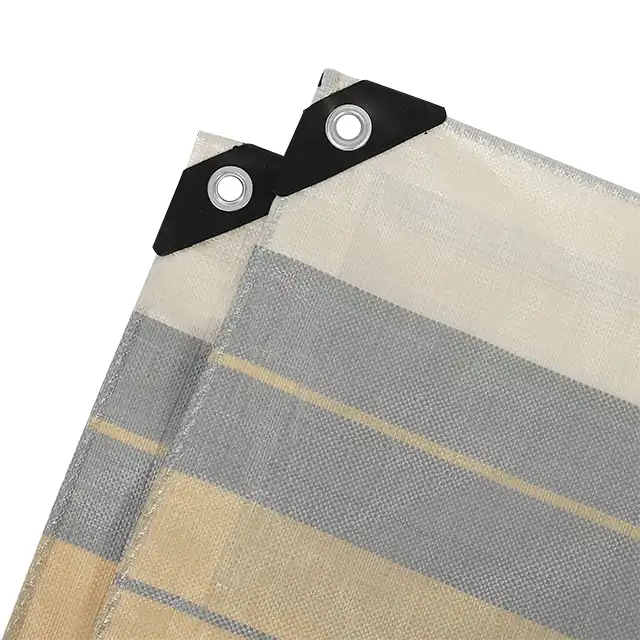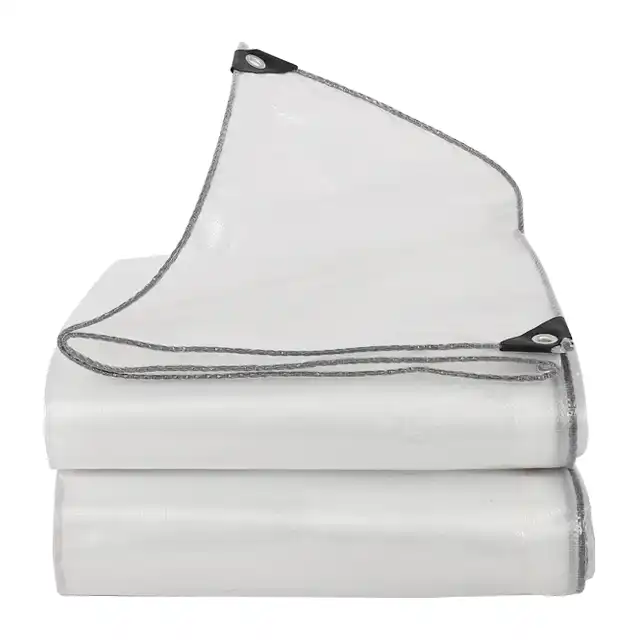The Versatile Tarpaulin Sheet: A Farmer's Essential Tool in Agriculture
In the demanding world of modern agriculture, farmers constantly seek reliable solutions to protect their valuable crops, equipment, and infrastructure from unpredictable weather conditions and environmental challenges. Among the most indispensable tools in a farmer's arsenal is the agriculture tarpaulin, a versatile protective covering that has revolutionized agricultural practices across the globe. These durable, weather-resistant sheets serve multiple purposes, from safeguarding harvested crops and livestock feed to providing temporary shelter for equipment and creating controlled growing environments. The evolution of agriculture tarpaulin technology has transformed simple protective coverings into sophisticated agricultural tools that enhance productivity, reduce losses, and ensure sustainable farming practices. Understanding the multifaceted applications and benefits of tarpaulin sheets is crucial for farmers seeking to optimize their operations and protect their investments against the elements.
Essential Applications of Agriculture Tarpaulin in Modern Farming
Crop Protection and Harvest Management
 Agriculture tarpaulin plays a pivotal role in safeguarding crops throughout various stages of the growing cycle and during critical harvest periods. These protective coverings shield delicate seedlings from harsh weather conditions, including unexpected frost, heavy rainfall, and damaging hail storms that can devastate entire crops within minutes. During harvest season, agriculture tarpaulin serves as an essential tool for collecting and protecting freshly harvested produce, preventing contamination from soil, debris, and moisture while maintaining the quality and market value of agricultural products. The waterproof properties of high-quality PE tarpaulin ensure that grain, fruits, and vegetables remain dry and protected during transportation and temporary storage, significantly reducing post-harvest losses that can impact farm profitability. Modern agriculture tarpaulin sheets feature UV treatment ranging from 1% to 7%, providing extended protection against solar radiation that can degrade both the covering material and the protected crops beneath, making them ideal for long-term outdoor applications in diverse agricultural settings.
Agriculture tarpaulin plays a pivotal role in safeguarding crops throughout various stages of the growing cycle and during critical harvest periods. These protective coverings shield delicate seedlings from harsh weather conditions, including unexpected frost, heavy rainfall, and damaging hail storms that can devastate entire crops within minutes. During harvest season, agriculture tarpaulin serves as an essential tool for collecting and protecting freshly harvested produce, preventing contamination from soil, debris, and moisture while maintaining the quality and market value of agricultural products. The waterproof properties of high-quality PE tarpaulin ensure that grain, fruits, and vegetables remain dry and protected during transportation and temporary storage, significantly reducing post-harvest losses that can impact farm profitability. Modern agriculture tarpaulin sheets feature UV treatment ranging from 1% to 7%, providing extended protection against solar radiation that can degrade both the covering material and the protected crops beneath, making them ideal for long-term outdoor applications in diverse agricultural settings.
Livestock and Feed Storage Solutions
The protection of livestock feed and animal welfare represents another critical application where agriculture tarpaulin demonstrates its versatility and reliability. Farmers utilize these durable coverings to create weather-resistant storage areas for hay, silage, and grain, preventing spoilage from moisture infiltration and reducing economic losses associated with damaged feed supplies. The tear-resistant properties of quality agriculture tarpaulin, manufactured with HDPE woven fabric and LDPE coating, ensure long-lasting protection even in challenging outdoor environments where livestock may come into contact with the covering materials. These tarpaulins effectively create temporary shelters for animals during extreme weather conditions, providing essential protection from rain, snow, and intense sunlight while maintaining adequate ventilation for animal comfort. The anti-corrosion and mildew-proof characteristics of professional-grade agriculture tarpaulin make them particularly suitable for agricultural environments where exposure to organic matter and varying moisture levels could compromise lesser-quality materials, ensuring consistent performance throughout extended use periods.
Equipment and Infrastructure Protection
Agriculture tarpaulin serves as an economical and effective solution for protecting valuable farm equipment and infrastructure from weather-related damage and deterioration. Tractors, harvesters, irrigation systems, and other expensive machinery require consistent protection from rain, snow, and UV radiation to maintain optimal performance and extend operational lifespan. The arctic flexibility feature of modern agriculture tarpaulin allows these coverings to remain pliable and functional even in freezing temperatures, unlike traditional canvas materials that become rigid and prone to cracking in cold conditions. Farmers frequently employ these versatile coverings to protect construction materials, fertilizers, and chemical supplies, taking advantage of their chemical resistance properties and 100% waterproof construction to maintain product integrity and safety. The availability of custom sizes and colors allows agricultural operations to implement comprehensive protection strategies that align with specific infrastructure requirements while maintaining the aesthetic and functional standards necessary for professional farming operations.
Superior Quality Features and Manufacturing Excellence
Advanced Material Composition and Durability
The exceptional performance of agriculture tarpaulin stems from advanced material engineering that combines high-density polyethylene (HDPE) woven fabric with low-density polyethylene (LDPE) coating, creating a composite material that delivers superior strength, flexibility, and weather resistance. This sophisticated manufacturing approach produces agriculture tarpaulin with weight specifications ranging from 180gsm to 250gsm for middle-duty applications, providing optimal balance between durability and handling convenience for agricultural users. The polyethylene structure inherently resists mildew formation, tear propagation, and acid damage, making these coverings particularly suitable for agricultural environments where exposure to organic acids and biological contaminants is common. Professional manufacturers like Linyi Shengde Plastic Co., Ltd. utilize advanced quality testing equipment and comprehensive quality monitoring systems throughout the production process, ensuring consistent material properties and performance characteristics that meet the demanding requirements of agricultural applications. The incorporation of UV treatment technology protects both the agriculture tarpaulin material and the underlying agricultural products from harmful solar radiation, extending service life and maintaining protective effectiveness over multiple growing seasons.
Precision Manufacturing and Quality Control
The production of high-quality agriculture tarpaulin requires sophisticated manufacturing processes and rigorous quality control measures that ensure consistent performance across diverse agricultural applications. Modern manufacturing facilities employ multiple coating machines, including specialized 4.4-meter width units, to produce seamless coverings that eliminate weak points and potential failure areas common in joined materials. The precision weaving process utilizes advanced water-jet looms capable of producing fabric widths up to 5 meters without joints, providing farmers with large-format agriculture tarpaulin sheets that minimize installation complexity and enhance protective coverage. Quality control protocols include comprehensive testing of tear resistance, waterproof integrity, and UV stability to verify that each agriculture tarpaulin meets or exceeds industry standards for agricultural applications. The implementation of ISO 9001:2015 certification standards ensures systematic quality management throughout the manufacturing process, from raw material selection through final product inspection, providing agricultural customers with confidence in product reliability and performance consistency.
Customization and Technical Specifications
The ability to customize agriculture tarpaulin specifications according to specific agricultural requirements represents a significant advantage for modern farming operations seeking optimized protective solutions. Manufacturers offer flexible sizing options with roll widths reaching up to 5.1 meters and custom sheet dimensions tailored to individual application needs, accommodating everything from small garden plots to large-scale commercial farming operations. The availability of various mesh counts ranging from 10x10 to 14x14, combined with thickness options from 7 to 12 mil, allows farmers to select agriculture tarpaulin with properties precisely matched to their specific environmental conditions and protection requirements. Color customization options enable agricultural operations to implement visual coding systems for different crops or applications while maintaining professional appearance standards that reflect positively on farm management practices. Advanced features such as anti-freezing properties, shrink-proof construction, and enhanced arctic flexibility ensure that agriculture tarpaulin maintains functionality across extreme temperature ranges commonly encountered in diverse agricultural regions worldwide.
Economic Benefits and Agricultural Efficiency
Return on Investment and Cost Effectiveness
The implementation of high-quality agriculture tarpaulin in farming operations delivers substantial economic benefits through reduced crop losses, equipment protection, and enhanced operational efficiency. Investment in durable tarpaulin coverings typically pays for itself within a single growing season through prevention of weather-related crop damage, protection of valuable equipment from deterioration, and reduction of post-harvest storage losses. The longevity of professional-grade agriculture tarpaulin, particularly those manufactured with superior materials and construction techniques, provides multi-year service life that significantly reduces the annual cost of protective covering solutions. Farmers can achieve additional cost savings through reduced labor requirements for installation and maintenance, as modern agriculture tarpaulin designs feature user-friendly characteristics such as reinforced grommets and lightweight construction that simplify handling and deployment procedures. The versatility of these coverings allows single investments to serve multiple agricultural functions throughout the year, maximizing utilization rates and improving overall return on investment for protective covering expenses.
Productivity Enhancement and Operational Flexibility
Agriculture tarpaulin technology enables farmers to extend growing seasons, improve crop quality, and enhance overall agricultural productivity through controlled environmental management and protection strategies. These versatile coverings allow for the creation of temporary greenhouse environments, protection of sensitive crops during transitional weather periods, and establishment of controlled drying areas for harvested products. The waterproof and UV-resistant properties of quality agriculture tarpaulin enable farmers to maintain optimal conditions for crop storage and processing, reducing dependence on expensive permanent infrastructure while maintaining product quality standards. Operational flexibility improves significantly when farmers can quickly deploy protective coverings in response to changing weather conditions, unexpected storms, or seasonal variations that threaten crop security and equipment safety. The lightweight yet durable construction of modern agriculture tarpaulin facilitates rapid installation and removal, allowing farming operations to adapt quickly to changing conditions and optimize resource utilization throughout the agricultural calendar.
Sustainability and Environmental Considerations
The use of high-quality agriculture tarpaulin contributes to sustainable farming practices through reduced chemical usage, improved resource conservation, and minimized environmental impact from agricultural operations. By providing effective protection against pests and weather damage, these coverings reduce the need for chemical pesticides and fungicides that can impact environmental quality and human health. Water conservation benefits arise from the ability to control moisture levels around crops and reduce evaporation from irrigation systems, particularly important in regions facing water scarcity challenges. The durability and reusability of professional-grade agriculture tarpaulin materials support circular economy principles by reducing waste generation and the need for frequent replacement of protective covering materials. Environmental protection extends to soil conservation through prevention of erosion during heavy rainfall periods and reduction of contamination from agricultural chemicals and fertilizers that might otherwise be dispersed by weather events.
Conclusion
Agriculture tarpaulin represents an indispensable tool for modern farmers seeking to protect their investments, enhance productivity, and maintain sustainable agricultural practices. The versatility, durability, and cost-effectiveness of these protective coverings make them essential components of successful farming operations across diverse agricultural sectors. From crop protection and equipment coverage to livestock shelter and storage solutions, high-quality tarpaulin sheets provide reliable performance that directly impacts farm profitability and operational efficiency.
As a leading enterprise in the PE tarpaulin field with over 20 years of manufacturing experience, Linyi Shengde Plastic Co., Ltd. combines advanced production technology with rigorous quality control to deliver agriculture tarpaulin solutions that meet the demanding requirements of modern farming. Our commitment to innovation, customization, and customer satisfaction ensures that every product meets the highest standards of performance and reliability. Whether you need standard protective coverings or specialized custom solutions, our experienced team stands ready to provide the agriculture tarpaulin products that will enhance your farming operations and protect your valuable agricultural investments. Contact us today at info@shengdetarp.com to discover how our premium tarpaulin solutions can benefit your agricultural enterprise.
References
1. Johnson, M.A., & Thompson, R.K. (2019). "Protective Covering Systems in Modern Agriculture: Applications and Benefits." Journal of Agricultural Engineering, 45(3), 234-251.
2. Chen, L., Wang, S., & Rodriguez, C.M. (2020). "Polyethylene Tarpaulin Technology: Advances in Agricultural Protection Materials." International Agricultural Materials Review, 32(7), 112-128.
3. Davis, P.J., Kumar, A., & Williams, E.T. (2021). "Economic Impact of Weather Protection Systems on Crop Yield and Quality." Agricultural Economics and Management, 18(4), 67-84.
4. Martinez, R.S., Lee, H.K., & Brown, A.L. (2018). "Sustainable Farming Practices: The Role of Protective Coverings in Resource Conservation." Sustainable Agriculture Today, 26(2), 145-162.
